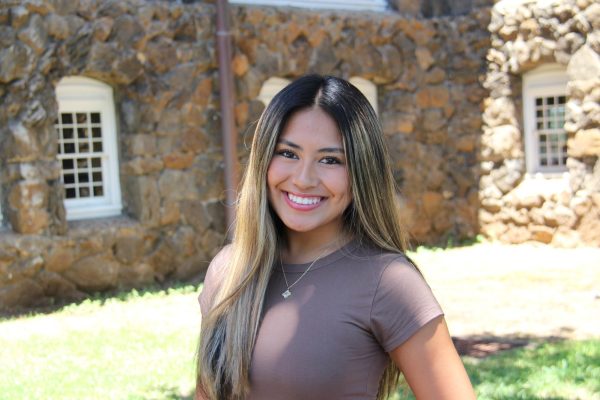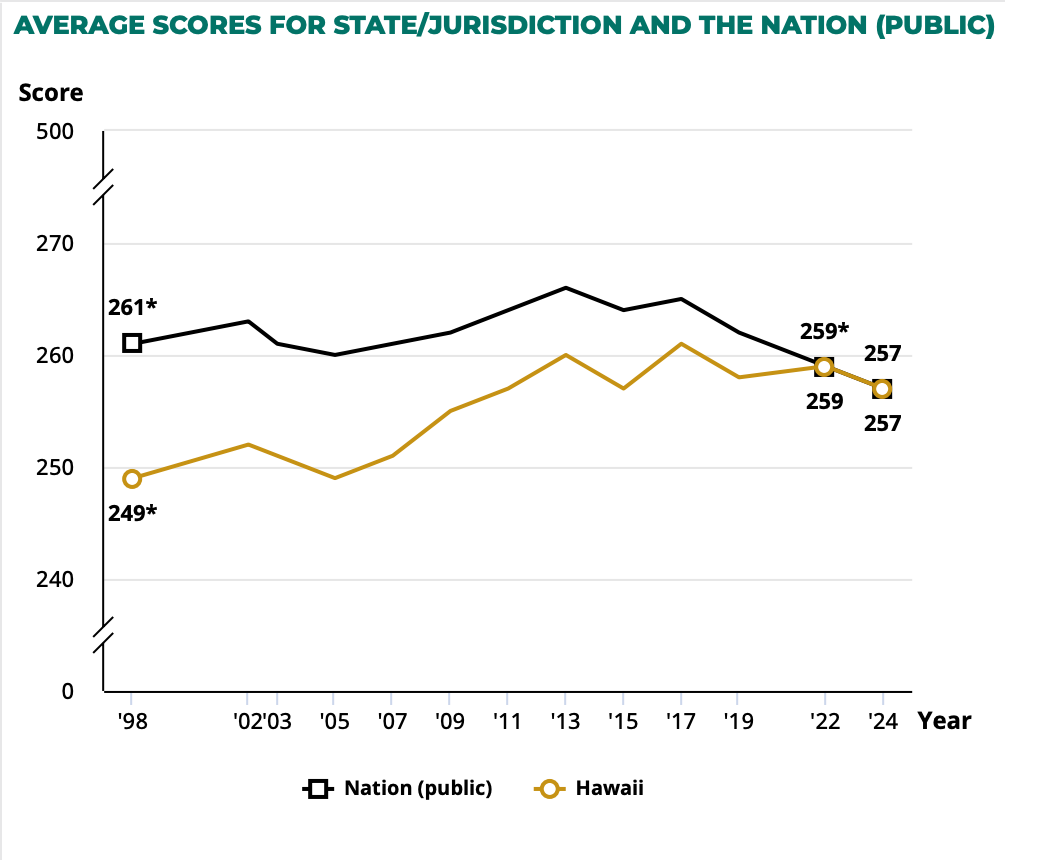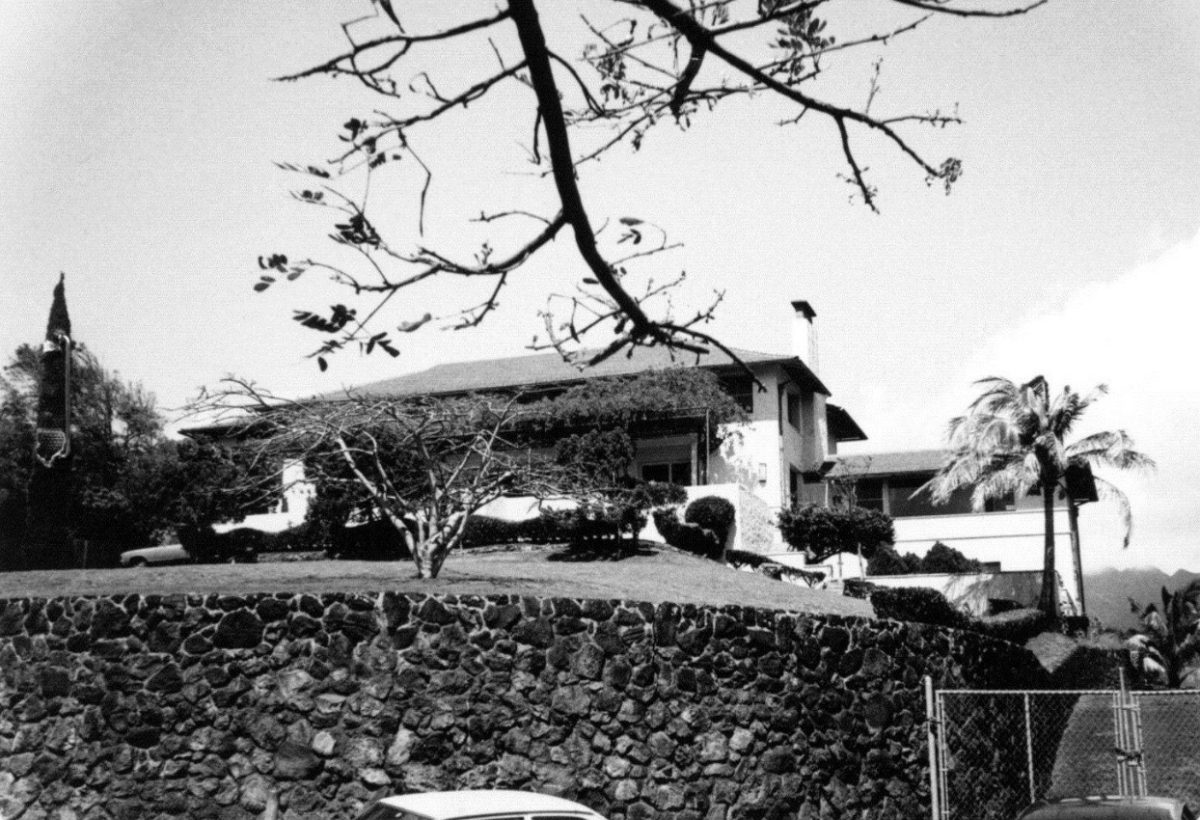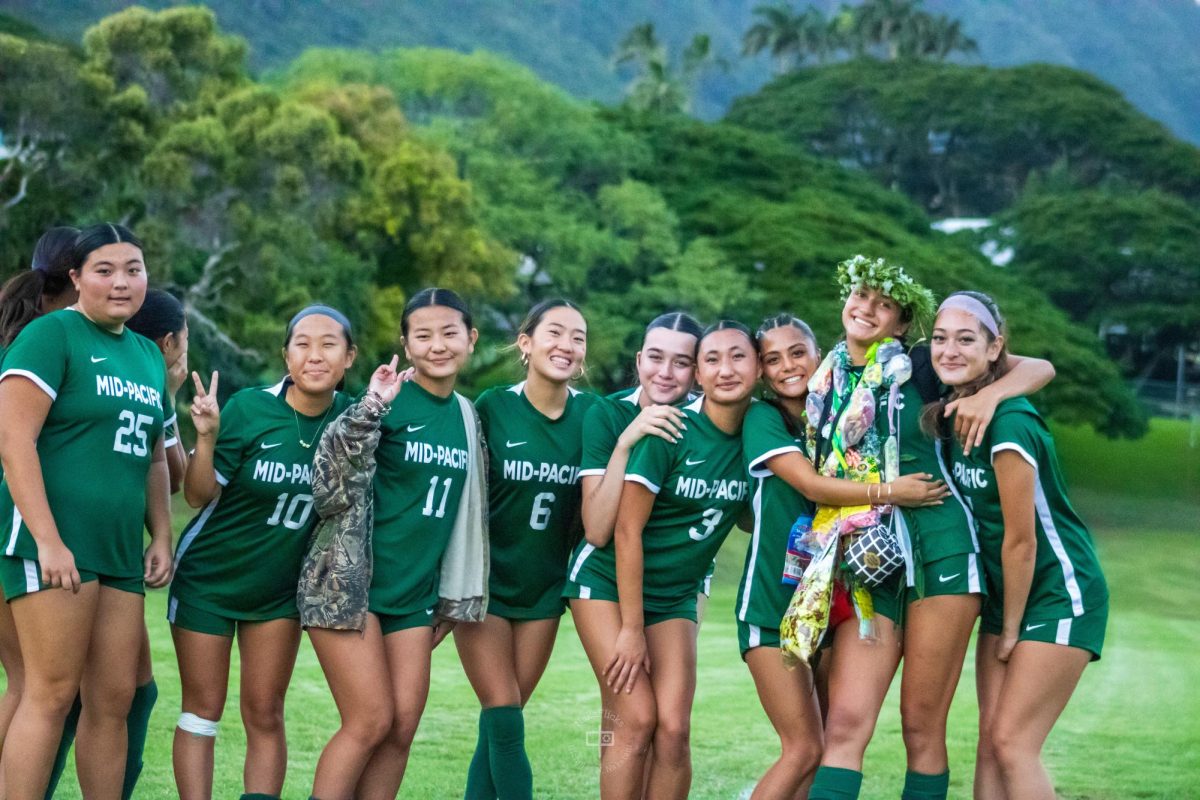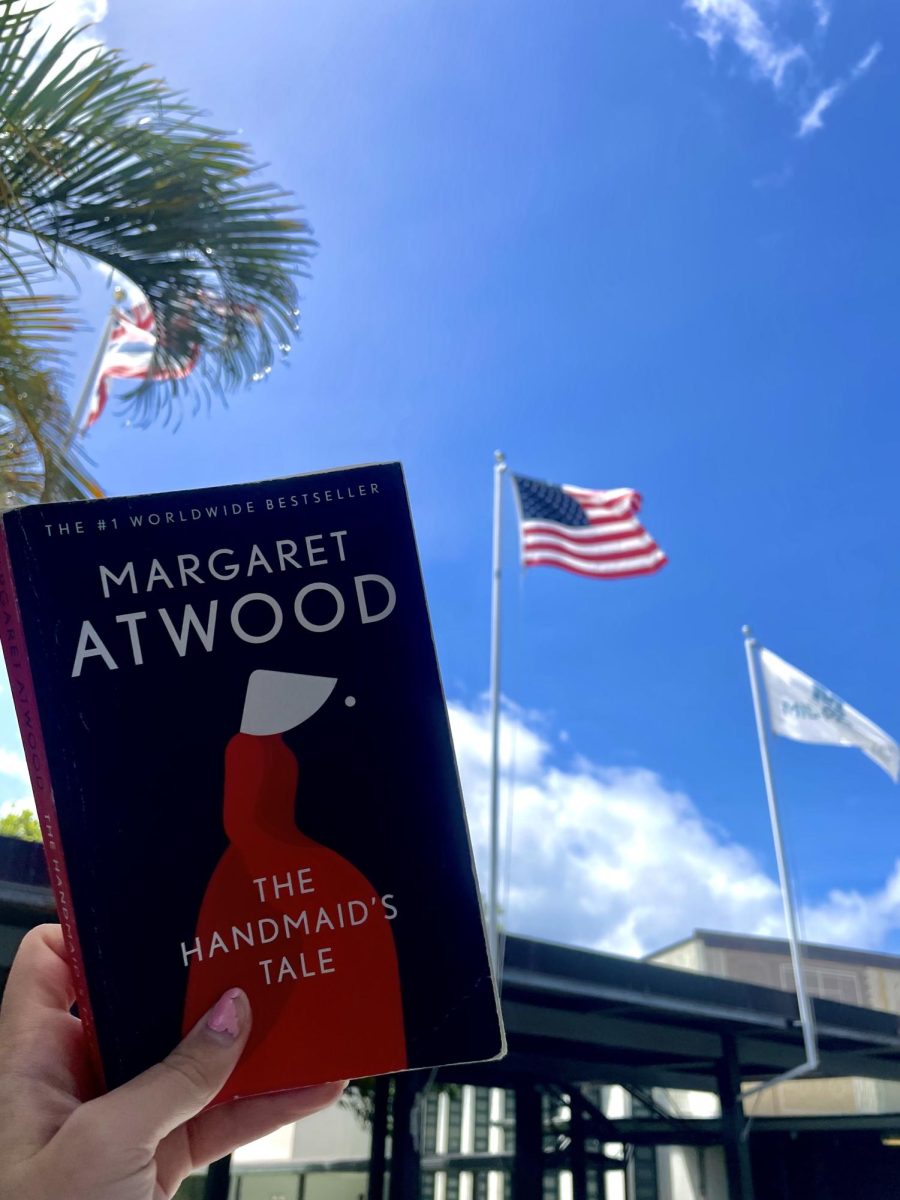Where Does Our Tuition Go?
April 13, 2023
Lately, for Americans, inflation has made one thing clear: life is expensive. And another rising cost is private school tuition. For Mid-Pacific parents that means a new bill: for the 2022-2023 school year the starting tuition is 036;28,611.
Chief Operating Officer Leslie Keneshiro said many families are under financial pressure due to the pandemic and inflation, and this is something the school recognizes when they increase tuition.
“Due to the pandemic the school tried to be cognizant that a lot of families were struggling financially, so during that year, we tried to limit the increase,” Kaneshiro said.
Now that the worst effects of the pandemic appear to be behind us, Mid-Pacific has decided to increase tuition by 4% this year.
During the pandemic, the school wasn’t able to host students’ favorite events like Ho’olaulea. This resulted in the school spending less money than it would during a normal school year. The tuition increase was held at 2.5%.
Now with the school more open, there are more activities available, which explains the 4% increase.
Where does the money go?
There are 1,397 students, pre-K through 12, enrolled in the school. The revenue that the school collects from tuition, deducting 036;5.6 million for financial aid, is approximately 34,400,600 for the 2022-2023 school year.
If you were to calculate how much money a family would be spending starting this year, going to school from preschool to 12th grade on normal tuition with a 4% increase per year, the bill would come in at 429,893. To put that into perspective, this could buy a person around 9 average-priced cars with that amount.
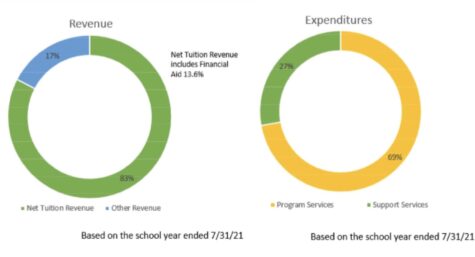
Kaneshiro said 69% of revenue expenditures were spent on Program Services, and that was 23.4 million.
Program Services Include:
– All student programs including academics, MPSA, and athletic programs
– Teachers salary
– Other costs include supplies, materials, technology, activities, field trips
“Overall, most of the money goes to the Academics,” Kaneshiro said.
The remaining 9 million of revenue (27%) goes towards support services.
Support Services Include:
– Cost to maintain the campus and facilities
– The people who help maintain our campus
– Insurance the school maintains
– Ancillary services
– Non-teaching employees including business office, institutional advancement, admissions”, Kaneshiro said.
To address a 10% deficit, donations, endowments, and other revenue were collected, leaving the school with a net surplus of 5% – or 1.7 million.
Other revenues incorporate organizations renting out the school’s facilities, which gives the school another source of income.
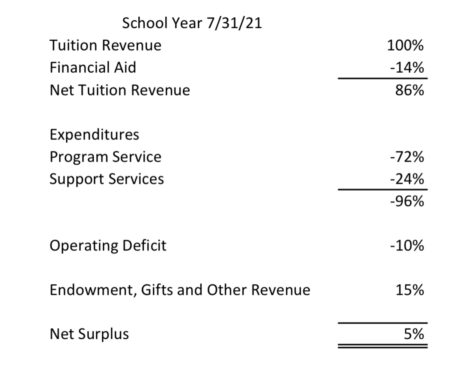
Tuition Throughout the Years:
Throughout the years, school tuition has slightly increased and will continue to.
“The tuition when I was attending the school was a little over 4,000,” Alumni Elise Dixon, Class of 1994, said.
Dixon has come back to the school to continue the legacy, with her current child, junior Payton Dixon, class of 2024, enrolled in the school. Payton entered the school in kindergarten because his parents felt “it was a perfect fit.”
Different Perspectives on Tuition
Senior Taro Tsuji believes that the price of the tuition does not match the quality of the school and education.
“If you look at other private schools that are cheaper than ours, they have a better standard and more to offer,” senior Taro Tsuji said.
Multiple people have different opinions on whether the tuition is reasonable. As shown, parents have different opinions than a student would. The majority of parents pay for their child’s tuition, so they are able to get a better understanding of where the money goes.
“By the time I graduated, the tuition was around 7,000,” Dixon said.
She agrees with the yearly increase in tuition prices and believes it’s reasonable, due to inflation and what the school has to offer.
The Future
The school is constantly implementing new 21st-century features, so it can strive to be one of the top schools to stay modern.
The preschool has recently added a 21st-century learning environment, which is a huge eye-catcher when parents are finding schools to send their children to.
“My husband and I were very impressed with the elementary school program, and the 21st-century learning that was newly implemented in the school. After seeing the campus, we knew we were willing to pay the tuition to send our son here,” Dixon said.
Not only is the preschool staying current, but also the middle school.
“The middle school recently added Wood Hall in 2015, and is already envisioning a second middle school building and what that would look like for a 21st Century learner,” Kaneshiro.
The school also has plans to upgrade and renovate Kawaiahao and other buildings around campus.
Sports: Looking Ahead
With the topic of staying current, this also includes sports and maintaining the school’s practice facilities.
“When I think about the school implementing new features, I think about what new sports features are going to be added in the future,” Tsuji said.
Another main project that the school has in the works is track and field.
“I think that some of our facilities are outdated, and I understand that they recently received fundings to build a track, but there are also lacking factors in our school, such as our pool,” Tsuji said.
Sports is a controversial topic due to the fact that people either disagree or agree on how much money should be funded towards each sport, and whether gender goes into account while deciding the amount they need.
“If you think about the money going towards each sport, it ultimately depends upon the number of students that want to participate,” Kaneshiro said.
“I wouldn’t say that I am sending my child to Mid Pacific just for the baseball program, he understands very well that school comes first and sports are secondary. Your child is not guaranteed into any sport, so you should value the school’s values first,” Dixon said.
Mid-Pacific is one of the few private schools that do not have an Olympic-sized swimming pool, and some swimming students have complained about not having the room to practice in the Mid-Pacific pool, so they were reduced to practicing at Punahou.
“We have heard and taken into consideration students’ comments on the size of the pool, but if you look at our budget, our budget can barely cover the cost to educate our students. The main way to go forward with a large project like this is through donations,” Kaneshiro said.
The topic of what our tuition goes towards has gotten many students riled up and eager to speak out.
“I feel like they bias opinions that go towards the funding of sports, a lot of money towards the baseball program, they have a lot of funding, and they always get the new equipment, while I feel like other sports like swimming gets less funding and all we get is new suits, but we usually have to pay for them,” Tsuji.
“Costs that we fund for swimming, only include the equipment used, such as fins, pull buoys, stroke markers, kick boards, etc.,” Athletic Director Scott Wagner said.
“I think you really need to ask and evaluate what each sport needs because they have never really asked the students participating in the sport what they need,” Tsuji said.
“Baseball and swimming are very different sports that make it difficult to compare. It is important that I share that our athletic program is carefully reviewed each year to ensure that we are being fiscally responsible with budget and that there is equity throughout,” Wagner said.
“I understand that other sports do require different fundings but certain sports shouldn’t get looked past, and every sport deserves the same attention,” Tsuji said.
Boys’ and girls’ sports are both equally valued the same, and both are funded the same amount. There is no gender bias at Mid-Pacific.
“For example, baseball and softball receive the exact same funding,” Wagner said.
Three percent of the school’s total operating expenses go toward sports. This data was collected in the 2021-2022 school year.
“The three percent that went towards the Athletics was taken during a pandemic year, so I’m sure that this year will be much higher,” Kaneshiro said.
Compared to athletics, six percent of the total operating expenses go toward the MPSA Program.
The pandemic created great uncertainty, but the leaders of Mid-Pacific want to ensure the community that all decisions are made with care.
“I think it’s important for students to learn and understand what our tuition goes towards before gaining an opinion. We highly appreciate families that are trusting our school with educating their child, we understand that it is not cheap and we take that very seriously,” Kaneshiro said.


